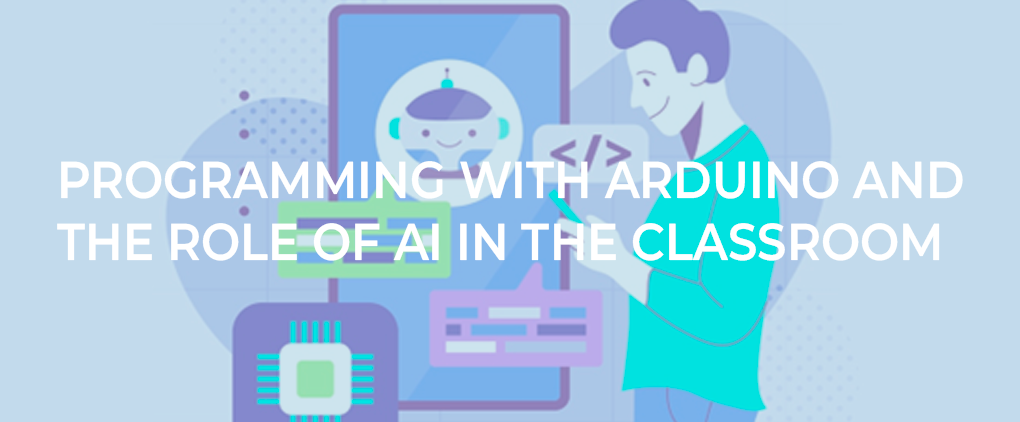Programming with Arduino and the Role of AI in the Classroom
In an era shaped by rapid technological progress, integrating programming and electronics into the classroom is no longer optional; it’s essential. At the heart of this transformation lies Arduino, an open-source platform that empowers students and educators to explore the world of embedded systems, robotics, and creative problem-solving. In the CODEDU project, we explore how tools like Arduino, combined with innovative methodologies, are reshaping educational experiences across Europe.

Source: Image by freepik</a>
Learning to Code in an AI-Driven World
As artificial intelligence (AI) becomes more embedded in our daily lives, students need to develop digital skills that go beyond basic interaction with technology. Learning to code, especially through platforms like Arduino, gives learners the ability to understand, question, and shape the technologies that surround them.
Arduino offers a hands-on introduction to computational thinking. It allows students to build smart devices, explore the Internet of Things (IoT), and engage with real-world challenges using sensors, motors, and logic. But more than that, coding with Arduino fosters creativity, collaboration, and a mindset geared toward innovation.
In this context, coding becomes more than a technical skill, it becomes a form of expression and a foundation for digital literacy.

Source: Image by vectorjuice on Freepik
How Can AI Support Coding in Education?
AI is not only transforming what we teach but also how we teach it, especially when it comes to programming. Here’s how AI can enhance the coding learning experience in the classroom:
1. Intelligent Code Assistance
AI-powered tools, such as code suggestion engines and auto-completion systems, help students write code more efficiently. These tools can:
- Suggest the next lines of code.
- Identify syntax errors in real time.
- Recommend best practices and cleaner alternatives.
This lowers the barrier for beginners and allows students to focus on problem-solving rather than technical syntax.
2. Personalised Learning Paths
AI can analyse how students interact with coding tasks and adapt challenges to their level. For example:
- A student struggling with loops might receive more guided exercises.
- A more advanced learner might be prompted to apply machine learning algorithms with Arduino sensors.
This ensures that every learner stays engaged and progresses at their own pace.
3. Instant Feedback and Debugging
AI systems can provide immediate feedback when students make mistakes, helping them learn from trial and error. Some platforms even include virtual tutors that guide learners step-by-step through logic errors or design problems.
4. Natural Language Interfaces
New AI tools allow students to write code using plain language prompts. For example, a student can type:
«Make the LED blink every 2 seconds when the temperature is above 25°C»
and the AI can translate this into Arduino code. This can be a powerful bridge for students who are new to programming or have learning difficulties.
5. Inspiration and Project Support
AI can also serve as a creative companion. When students are working on Arduino-based projects, AI tools can:
- Suggest project ideas.
- Help design circuits or select compatible sensors.
- Recommend libraries or example sketches to get started.

Source: Image by macrovector on Freepik
Arduino and AI: A Powerful Combination
The integration of Arduino and AI opens the door to interdisciplinary learning. Students can build projects that respond intelligently to their environment, apply machine learning models, and even explore ethics and societal impacts of technology.
By combining the tangible, hands-on nature of Arduino with the adaptive, smart capabilities of AI, educators can offer richer and more engaging learning experiences. Students are not just passive consumers of technology, they become active creators and critical thinkers.
Through the CODEDU project, we aim to promote these practices among educators and learners. By developing new methodologies and creating accessible materials, we support the use of Arduino (and AI) as tools to empower the next generation of innovators.
Webpages we consulted to develop this article:
https://www.arduino.cc/education/friend-or-foe-learning-to-code-in-an-ai-driven-world
https://www.arduino.cc/education/how-is-ai-used-in-education


